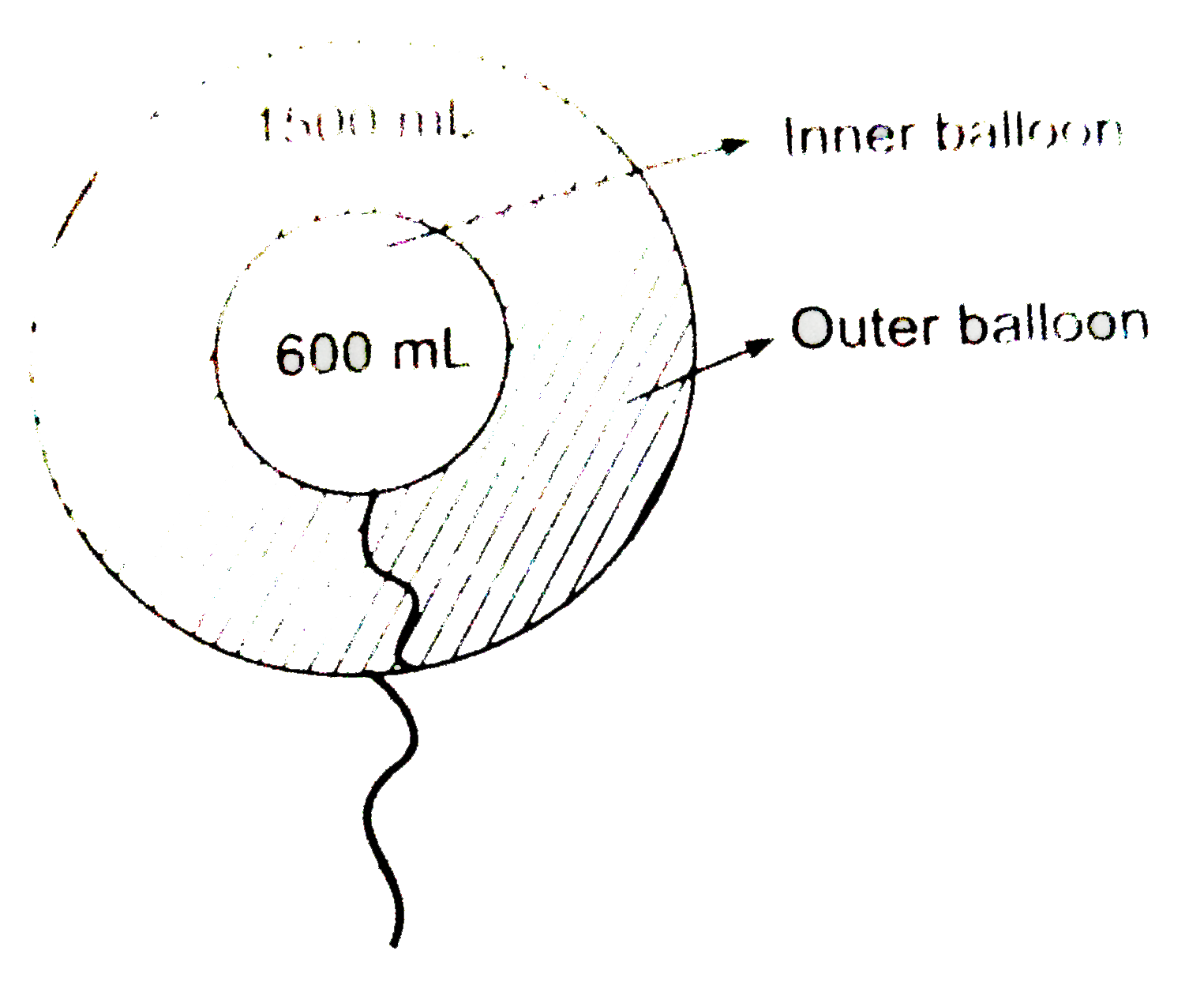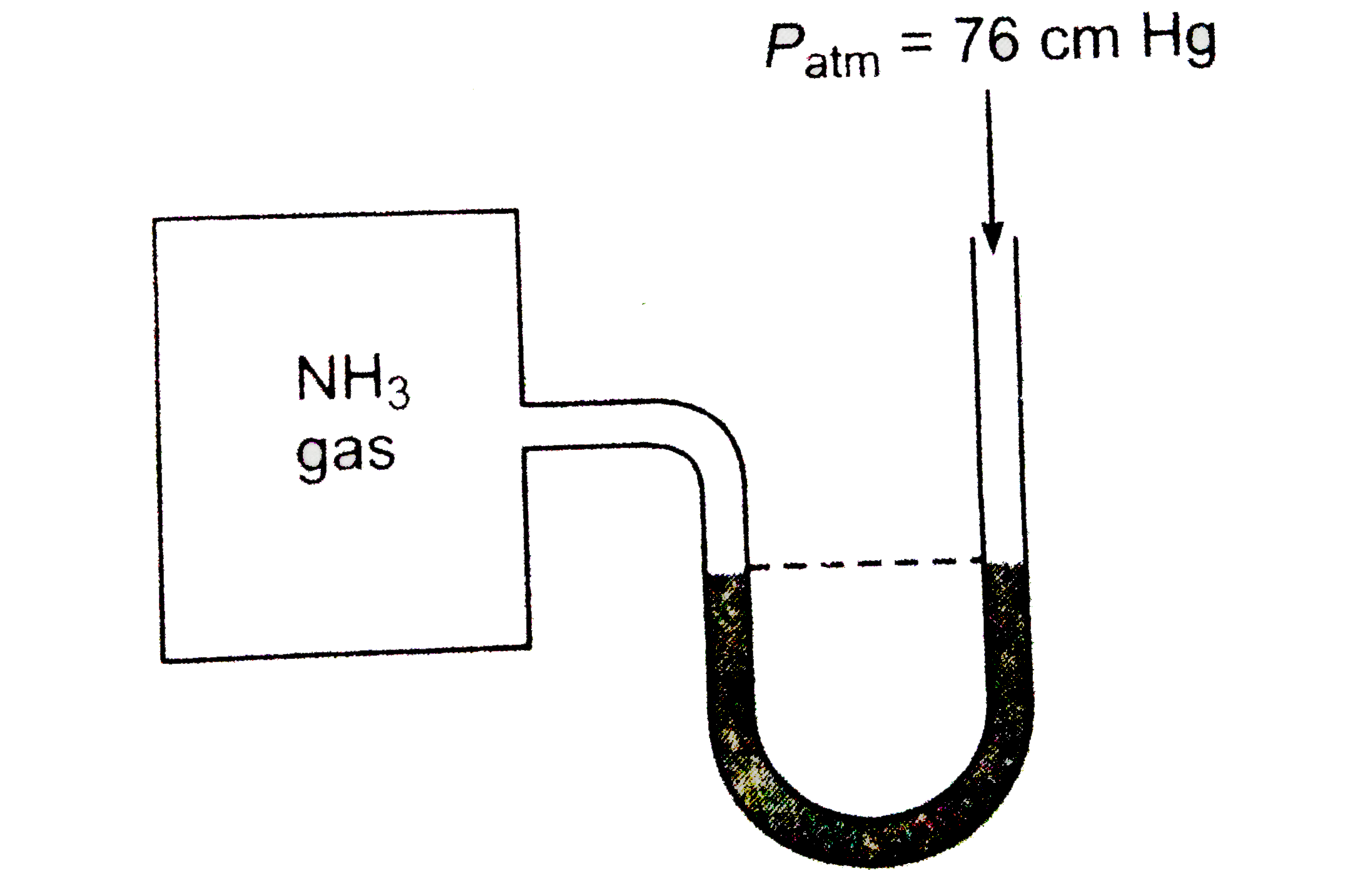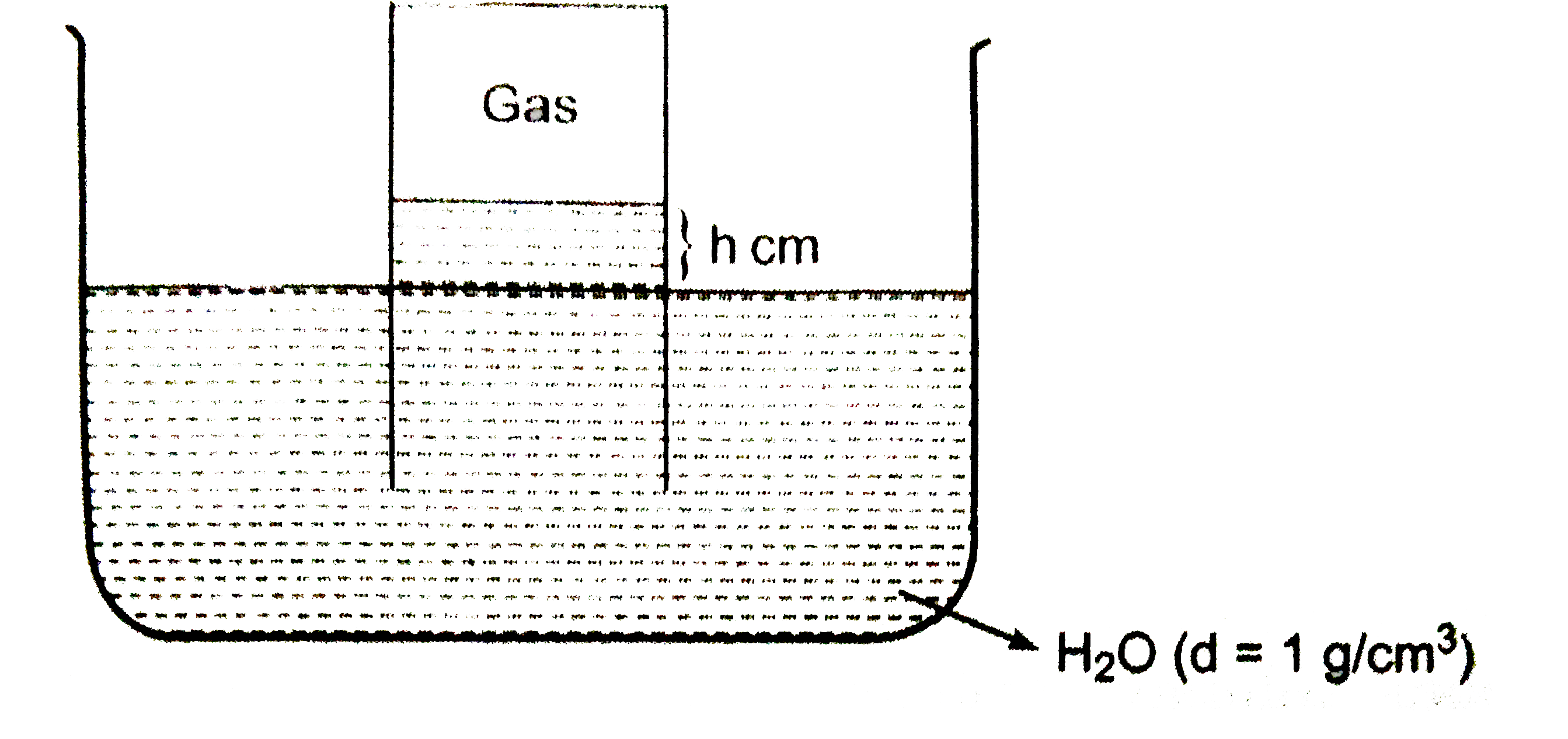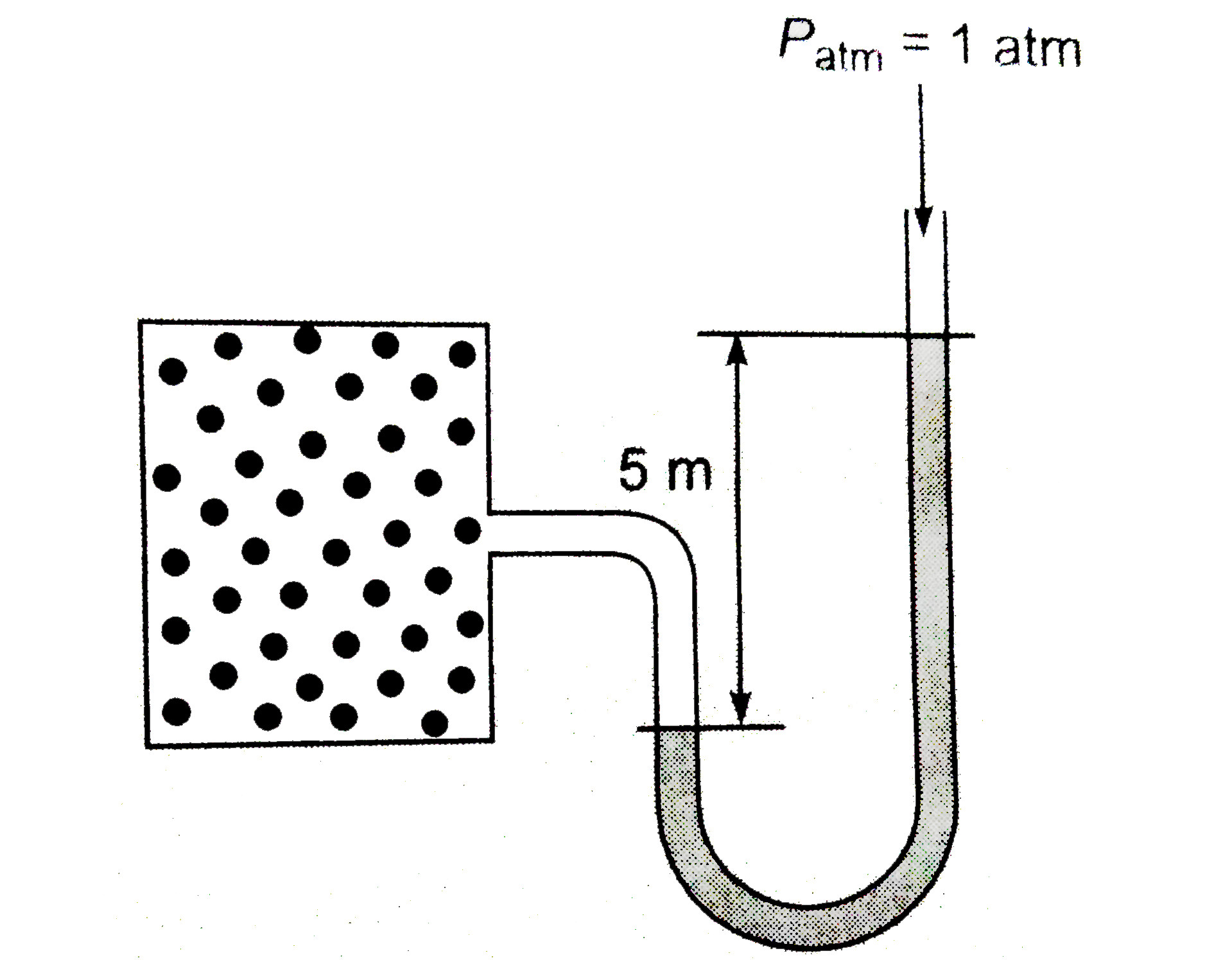Complete Solutions to Level 1 of chapter GASEOUS STATE of Class 11 book with complete answers and questions
| Class 11 | CHEMISTRY |
| Chapter | GASEOUS STATE |
| NARENDRA AWASTHI | Level 1 |
| Number Of Questions | 100 |
| Academic Year | 2023-24 |
Which of the following statements is not correct about the three states of matter, i.e., solid, liquids and gas?
View SolutionWhich of the following plots does not represent Boyle's law?
View SolutionA certain sample of gas has a volume of `0.2` litre measured at `1 atm` pressure and `0^(@)C`. At the same pressure but at `273^(@)C`, its volume will be
View SolutionAmong the following curves, which is not according to Charle's law ?
View SolutionInitial temperature of an ideal gas is `75^(@)C.` At what temperature, the sample of neon gas would be heated to double its pressure, if the initial volume of gas is reduced by 15%?
View SolutionWhich is correct curve for Charle's law, when the curve is plotted at 0.821 atm pressure for 10 mole ideal gas?
View SolutionAt constant volume, for a fixed number of moles of a gas, the pressure of the gas increases with the rise in temperature due to
View Solutionwhich in not correct curve for Gay-luacc's law ?
View SolutionThree flasks of equal volumes contain `CH_(4),CO_(2), " and "Cl_(2)` gases respectively. They will contain equal number of molecules if :
View SolutionWhich is incorrect curve for Boyle's law ?
View SolutionEqual volumes of gases at the same temperature and pressure contain equal number of particles. This statement is a direct consequence of
View SolutionA 2.24L cylinder of oxygen at 1 atm and 273 K is found to develop a leakage. When the leakage was plugged the pressure dropped to 570 mm of Hg. The number of moles of gas that escaped will be :
View SolutionWhich of the following curve is correct for an ideal gas ?
View SolutionIn the equation of state of an ideal gas PV =nRT , the value of the universal gas constant is not correct :
View SolutionAt `0^(@)C` and one atm pressure, a gas occupies 100 cc. If the pressure is increased to one and a half-time and temprature is increased by one-third of absolute temperature, then final volume of the gas will be:
View Solution10 g of a gas at 1 atm and 273 K occupies 5 litres. The temperature at which the volume becomes double for the same mass of gas at the same pressure is:
View SolutionWhich of the following curve does not represent Gay-Iusacc's law?
View SolutionDensities of two gases are in the ratio `1: 2` and their temperatures are in the ratio `2:1`, then the ratio of their respective pressure is
View SolutionTwo separate bulbs contain ideal gas `A` and `B`. The density of a gas `A` is twice that of a gas `B`. The molecular mass of `A` is half that of gas `B`. The two gases are at the same temperature. The ratio of the pressure of `A` to that gas `B` is
View SolutionVolume of the air that will be expelled from a vessel of `300 cm^(3)` when it is heated from `27^(@)C` to `37^(@) C` at the same pressure will be
View SolutionFor an ideal gas `V - T` curves at constant pressure `P_(1)` & `P_(2)` are shown in figure, from the figure
_E01_061_Q01.png)
View SolutionTwo flasks A and B of 500 mL each are respectivelly filled with `O_(2)" and "SO_(2)` at 300 K and 1 atm. Pressure . The flasks will contain:
View Solution2.8 g of a gas at 1atm and 273K occupies a volume of 2.24 litres. The gas can not be:
View SolutionFive grams each of the following gases at `87^(@)C` and 750 mm pressure are taken. Which of them will have the least volume ?
View SolutionAt what pressure a quantity of gas will occupy a volume of 60 mL, if it occupies a volume of 100mL at a pressure of 720 mm (while temperature is constant) :
View SolutionAt 1 atm and 273 K the density of gas, whose molecular weight is 45, is:
View SolutionA small bubble rises from the bottom of a lake, where the temperature and pressure are `8^(@)C` and `6.0 atm`, to the water's surface, where the temperature is `25^(@)C` and pressure is `1.0 atm`. Calculate the final volume of the bubble if its initial volume was `2mL`.
View SolutionArgon is an inert gas used in light bulbs to retard the vaporization of the filament. A certain light-bulb containing argon at 1.25 atm and `18^(@)C` is heated to `85^(@)C` at constant volume. Calculate its final pressure.
View SolutionCalculate the volume of `O_(2)` at 1 atm and 273 K required for the complete combustion of 2.64 L of acetylene `(C_(2)H_(2))` at 1 atm and 273 K. `2C_(2)H_(2)"(g)"+5O_(2)"(g)"rarr4CO_(2)"(g)"+2H_(2)O(l)`
View SolutionThe density of `O_(2)"(g)" ` is maximum at :
View SolutionAt `27^(@)C` a sample of ammonia gas exerts a pressure of 5.3 atm. What is the pressure when the volume of the gas is reduced to one-tenth of the original value at the same temperature ?
View SolutionA certen amount of gas at `25^(@)C` and at a pressure of 0.80 atm is kept in a glass vessel. Suppose that the vessel can withstand a pressure of 2.0 atm. How high can you raise the temperature of the gas without bursting the vessel?
View SolutionWhich one of these graphs for an ideal gas havinga fixed amount, the arrow indication, is incorrectly marked ?
View SolutionThe pressure of sodium vapour in a 1.0 L container is 10 torr at `1000^(@)C`. How many atoms are in the container?
View SolutionAn ideal gaseous mixture of ethane `(C_(2)H_(6))` and ethene `(C_(2)H_(4))` occupies `28` litre at `1atm` `0^(@)C`. The mixture reacts completely with `128 gm O_(2)` to produce `CO_(2)` and `H_(2)O`. Mole of fraction at `C_(2)H_(6)` in the mixtture is-
View SolutionA certain hydrate has the formula `"MgSO"_(4).xH_(2)O`. A quantity of 54.2 g of the compound is heated in an oven to drive off the water. If the steam generated exerts a pressure of 24.8 atm in a 2.0 L container at `120^(@)C`, calculate `x`.
View SolutionAir entering the lungs ends up in tiny sacs called alveoli.From the alveoli, the oxygen diffuses into the blood. The average radius of the alveoli is 0.0050 cm and the air inside contains 14 per cent oxygen. Assuming that the pressure in the alveoli is 1.0 atm and the temperature is `37^(@)C`, calculate the number of oxygen molecules in one of the alveoli.
View SolutionNitrogen forms several gaseous oxides. One of them has a density of 1.33 g/L measured 764 mmHg and `150^(@)C`. Write the formula of the compound.
View SolutionStarting out on a trip into the mountains, you inflate the tires on your automobile to a recommended pressure of `3.21xx10^(5)` Pa on a day when the temperature is -`5.0^(@)C`. You drive to the beach, where the temperature is `28.0^(@)C`. Assume that the volume of the tire has increased by 3%. What is the final pressure in the tyres?
View SolutionA compressed cylinder of gas contains `1.50xx10^(3)` g of `N_(2)` gas at a pressure of `2.0xx10^(7)` Pa and a temperature of `17.1^(@)C`. What volume of gas has been released into the atmosphere if the final pressure in the cylinder is `1.80xx10^(5)` Pa ? Assume ideal behaviour and that the gas temperature is unchanged.
View SolutionA high-altitude balloon is filled with `1.41xx10^(4)L` of hydrogen at a temperature of `21^(@)C` and a pressure of 745 torr. What is the volume of the balloon at a height of 20 km, where the temperature is `-48^(@)C` and the pressure is 63.1 torr?
View SolutionThe atmospheric pressure on Mars is o.61 kPa. What is the pressure in mm Hg?
View SolutionThe density of liquid gallium at `30^(@)C` is 6.095 g/mL. Because of its wide liquid range (30 to `2400^(@)C`), gallium is used as a barometer fluid at high temperature. What height (in cm) of gallium will be observed on a day when the mercury barometer reads 740 torr? `
` (The density of mercury is 13.6 g/mL.)
View SolutionA weather balloon is inflated with helium. The balloon has a volume of 100 `m^(3)` and it must be inflated to pressure of 0.10 atm. If 50 L gas cylinders of helium at a pressure of 100 atm are used, how many cylinders are needed? Assume that the temperature is constant.
View SolutionA balloon contains 14.0 L of air at 760 torr. What will be the volume of the balloon when it is taken to a depth of 10 ft. in a swimming pool? Assume that the temperature of the air and water are equal. (density : Hg=13.6g/mL.)
View SolutionA 0.50 L container is ocupied by nitrogen at a pressure of 800 torr and a temperature of `0^(@)C`. The container can only withstand a pressure of 3.0 atm. What is the highest temperature `("^(@)C)` to which the container may be heated?
View SolutionEqual volumes of oxygen gas and a second gas weigh 1.00 and 2.375 grams respectively under the same experimental conditions. Which of the following is the unknown gas?
View SolutionA high altitude balloon contains 6.81 g of helium in `1.16xx10^(4)" L at"-23^(@)C.` Assuming ideal gas behaviour, how many grams of helium would have to be added to increase the pressure to `4.0xx10^(-3)` atm?
View SolutionA 4.40 g piece of solid `CO_(2)` (dry ice) is allowed to sublime in a balloon. The final volume of the balloon is 1.00 L at 300 K. What is the pressure (atm) of the gas?
View SolutionFor a closed container containing 10 moles of an ideal gas, at constant pressure of `0.82` atm, which graph correctly represent, variation of log V us log T where volume is in litre and temp. in kelvin :
View SolutionThe intercept on y-axis and slope of curve plotted between P/T vs. T
( For an ideal gas having 10 moles in a closed rigid container of volume 8.21 L. (P= Pressure in atm and T = Temp. in K, `log_(10)2=0.30))` are respectively :
View SolutionA He atom at 300 K is released from the surface of the earth to travel upwards. Assuming that it undergoes no collision with other molecules, how high will it be before coming to the rest?
View SolutionThe density of gas `A` is twice that of B at the same temperature the molecular weight of gas B is twice that of A. The ratio of pressure of gas A and B will be :
View SolutionTwo inflated ballons I and II (thin skin) having volume 600 mL and 1500 mL at 300 K are taken as shown in diagram. If maximum volume of inner and outer balloons are 800 mL and 1800 mL respectively then find the balloon which will burst first on gradual heating.

View SolutionAn open flask containing air is heated from `300K` to `500K`. What percentage of air will be escaped to the atmosphere, if the pressure is kept constant ?
View SolutionAn open flask containing air is heated from `300K` to `500K`. What percentage of air will be escaped to the atmosphere, if the pressure is kept constant ?
View SolutionThe value of universal gas constant R depends on :
View SolutionA manometer attached to a flask contains with ammonia gas have no difference in mercury level initially as shown in diagram. After sparking into the flask, ammonia is partially dissociated as `2NH_(3)" (g)"rarr N_(2)" (g)"+3H_(2)" (g)"` now it have difference of 6 cm in mercury level in two columns, what is partial pressure of `H_(2)" (g)"` at equilibrium?

View SolutionAn ideal gas is collected by downward displacement of water. Select the correct expression for `P_(gas)` according to the diagram `[d_(Hg)=13.6 g//cm^(3)]`:

View SolutionA bubble of gas released at the bottom of a lake increases to four times its original volume when it reaches the surface. Assuming that atmospheric pressure is equivalent to the pressure exerted by a column of water 10 m high, what is the depth of the lake?
View SolutionCalculate the number of moles of gas present in the container of volume 10 L at 300 K, if the manometer containing glycerine shows 5 m difference in level as shown diagram.
(Given : `d_("glycerin")=2.72g//mL," "d_("mercury")=13.6g//mL`)

View SolutionA rigid vessel of volume ` 0.50m^(3)` containing `H_(2) ` at `20.5^(@)C` and a pressure of `611 xx 10^(3)` Pa is connected to a second rigid vessel of volume 0.75`m^(3)` containing Ar at `31.2^(@)C` at a pressure of `433xx10^(3)` Pa. A valve separating the two vessels is opened and both are cooled to a temperature of `14.5^(@)C`. What is the final pressure in the vessels?
View SolutionTwo glass bulbs A and B are connected by a very small tube having a stop cock. Bulb A has a volume of 100 `cm^(3)` and contained the gas, while bulb B was empty. On opening th stop cock. The pressure fell down to 40%. The volume of the bulb B must be:
View SolutionA mixture of `C_(2)H_(2)` and `C_(3)H_(8)` occupied a certain volume at 80 mm Hg. The mixture was completely burnt to `CO_(2)` and `H_(2)O(l)`. When the pressure of `CO_(2)` was found to be 230 mm Hg at the same temperature and volume, the mole fraction of `C_(3)H_(8)` in the mixture is :
View SolutionThe total pressure of a mixture of oxygen and hydrogen is 1.0 atm. The mixture is ignited and the water is removed. The remaining gas is pure hydrogen and exerts a pressure of 0.40 atm when measured at the same values of T and V as the original mixture. What was the composition of the original mixture in mole fraction ?
View SolutionTwo closed vessel A and B of equal volume of 8.21 L are connected by a narrow tube of negligible volume with open valve. The left hand side container is found to contain 3 mole `CO_(2)` and 2 mole of He at 400 K. What is the partial pressure of He in vessel B at 400 K?
(a)2.4 atm
(b)8atm
(c)12atm
(d)None of these
View SolutionAt STP a contains has 1 mole of `H_(2)` 2 mole `Ne,` 3 mole `O_(2)` and 4 mole `N_(2)`. Without changing total pressure if 2 mole of `O_(2)` is removed, the partial pressure of `O_(2)` will be decreased by
View Solution`821mLN_(2) (g)` was collected over liquid water at 300 K and 1 atm.If vapour pressure of `H_(2)O` is 30 torr then moles of `N_(2) (g)` in moist gas mixture is :
View SolutionLet P and `P_(s)` be the partial pressure of `H_(2)O(g)` and vapour pressure of `H_(2)O(l)` respectively. Then the % relative humidity is given by:
View SolutionThe vapour pressure of water at `80^(@)C` is 355 mm of Hg. 1 L vessel contains `O_(2)` at `80^(@)C`, which is saturated with water and the total pressure being 760 mm of Hg. The contents of the vessel were pumped into 0.3 L vessel at the same temperature. What is the partial presure of `O_(2)`?
View SolutionWhich of the following gaseous mixture does not follow Dalton's law of partial pressure?
View SolutionEqual masses of methane and oxygen are mixed in an empty container at `25^(@)C`. The fraction of the total pressure exerted by oxygen is:
View SolutionA box of 1 L capacity is divided into two equal compartments by a thin partition which are filled with 2g `H_(2)` and 16 g`CH_(4)` respectively. The pressure in each compartment is reorded as P atm. The total pressure when partition is removed will be:
View SolutionIf `10^(-4) dm^(3)` of water is introduced into a `1.0 dm^(3)` flask to `300K` how many moles of water are in the vapour phase when equilibrium is established ? (Given vapour pressure of `H_(2)O` at `300K` is `3170Pa R =8.314 JK^(-1) mol^(-1))` .
View SolutionDalton's law of partial pressures is not applicable to
View Solution56 g of nitrogen and 96 g of oxygen are mixed isothermaly and at a total pressure of 10 atm. The partial pressures of oxygen and nitrogen (in atm) are respectively :
View SolutionThe closed containers of the same capacity and at the same temperature are filled with 44 g of `H_(2)` in one and 44 g of `CO_(2)` in the other . If the pressure of carbon dioxide in the second container is 1 atm , then pressure of hydrogen in the first container would be :
View SolutionA jar contains a gas and a few drops of water at `TK` The pressure in the jar is `830 mm` of Hg The temperature of the jar is reduced by `1%` The vapour pressure of water at two temperatures are 300 and 25 mm of Hg Calculate the new pressure in the jar .
(a)792mm of Hg
(b)817mm of Hg
(c)800mm of Hg
(d)840mm of Hg
View Solution`O_(2)` and `SO_(2)` gases are filled in ratio of 1 : 3 by mass in a closed container of 3 L at temperature of `27^(@)C`. The partial pressure of `O_(2)` is 0.60 atm, the concentration of `SO_(2)` would be
View SolutionA gaseous mixture contains three gaseous `A,B` and `C` with a total number of moles of 10 and total pressure of `10 atm`. The partial pressure of `A` and `B` are `3 atm` and `1` atm respectively and if `C` has molecular weight of `2 g //mol`. Then, the weight of `C` present in the mixture will be `:`
View SolutionA rigid container contains 5 mole `H_(2)` gas at some pressure and temperature. The gas has been allowed to escape by simple process from the container due to which pressure of the gas becomes half of its initial pressure and temperature become `(2//3)^(rd)` of its initial. The mass of gas remaining is :
View SolutionPressure of 1 g ideal gas X at 300 K is 2 atm. When 2 g of another gas Y is introduced in the same vessel at same temperature, the pressure become 3 atm. The correct relationship between molar mass of X and Y is :
View SolutionDry ice is solid carbon dioxide. A 0.050 g sample of dry ice is placed in an evacuated 4.6 L vessel at `30^(@)C`. Calculate the pressure inside the vessel after all the dry has been converted to `CO_(2)` gas.
View SolutionA mixture of helium of neon gases is collected over water at `28.0^(@)C` and 745 mmHg. If the partial pressure of helium is 368 mmHg, what is the partial pressure of neon?
View Solution
Consider the following apparatus. Calculate the partical pressure of He after opening the valve. The temperature is remain constant at `16^(@)C`
(a)0.164atm
(b)1.64atm
(c)0.328atm
(d)1atm
View SolutionOxygen gas generated by the decomposition of potassium chlorate is collected. The volume of oxygen collected at `24^(@)C` and atmospheric pressure of `760 m m Hg` is `128 mL`. Calculate the mass `(` in grams `)` of oxygen gas obtained. The pressure of water vapour at `24^(@)C` is `22.4 m m Hg`.
View SolutionThe quantity `(PV)/(k_(B)T)` represents the (` k_(B):`Boltzmann constant)
View SolutionWhich of the following statements about kinetic energy (K.E.) is true?
View SolutionThe Ne atom has 10 times the mass of `H_(2)` molecule. Which of the following statements is true?
I. At `25^(@)C` both of them have the same kinetic energy.
II. Ten moles of `H_(2)` would have the same volume as 1 mole of Ne at same temp. and pressure.
III. One mole of Ne exerts the same pressure as one mole of `H_(2)` at STP.
IV. A `H_(2) ` molecule travels 10 times faster than Ne atom at same temperature.
V. At STP, one litre of Ne has 10 times the density of 1 litre of `H_(2).`
View SolutionWhich of the following is NOT a postulate of the kinetic molecular theory of gases?
View SolutionWhich one of the following relationships when graphed does not give a straight line for helium gas?
I. K.E. and T at constant pressure and volume
II. P v/s V at constant temperature for a constant mass
III. V v/s 1/T at constant pressure for a constant mass
View SolutionConsider Three one -litre flasks labeled A,B and C filled with the gases `NO,NO_(2),` and `N_(2)O,` respectively, each at 1 atm and 273 K. In which flask do the molecules have the highest average kinetic energy?
View SolutionWhich of the following statements is false?
View SolutionWhich is not correct in terms of kinetic theory of gases?
a.Gaseous particles are considered as point mass.
b.The gaseous molecules are in random motion.
c.When gaseous molecules collide, they lose energy.
d.When the gas is heated, the molecules moves faster.
View SolutionTwo flasks A and B have equal volumes. A is maintained at 300 K and B at 600 K. A contains `H_(2)` gas, B has an equal mass of `CO_(2)` gas. Find the ratio of total K.E. of gases in flask A to that of B.
View SolutionKinetic energy and pressure of a gas of unit volume are related as:
View SolutionTwo flask A and B of equal volumes maintained at temperature `300K` and `700K` contain equal mass of `He(g)` and `N_(2)(g)` respectively. What is the ratio of total translational kinetic energy of gas in flask A to that of flask B ?
View SolutionWhich of the following change is observed occurs when a substance X is converted from liquid to vapour phase at the standard boiling point?
I. Potential energy of the system cecreases
II. The distance between molecules increases
III.The average kinetic energy of the molecules in both phases are equal
View SolutionA mixture of Ne and Ar kept in a closed vessel at 250 K has a total K.E.=3 kJ. The total mass of Ne and Ar is 30 g. Find mass % of Ne in gaseous mixture at 250 K.
View SolutionIn two vessels of 1 litre each at athe same temperature 1g of `H_(2)` and 1g of `CH_(4)` are taken. For these gases:
View Solution
Level 1 questions and complete solutions for chapter GASEOUS STATE of NARENDER AVASTHI CHEMISTRY (ENGLISH) of Class 11